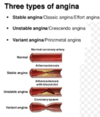Clinical Final Mock Exam Flashcards
(165 cards)
Which type of shunt has cyanosis?
right to left
left to right
right to left
patient has renal function without ability to concentrate urine
pyelonephritis
decreased # of nephrons
chronic renal insufficiency
Antigen-antibody reaction in which the glomeruli become inflamed. Results in total or partial blockage of large number of glomeruli and those that are not blocked develop increased permeability of the glomerular membrane, allowing large amounts of protein and red blood cells to leak into GF.
acute glomerulonephritis
Hypoproteinemia - Peeing out lots of plasma proteins due to increased permeability of the glomerular membrane causing a fall in colloid osmotic pressure and serious edema
nephrotic syndrome
retention of bilirubin in the liver causes
jaundice
barrett esophagus
metaplasia
congenital pyloric stenosis affects who
male newborns
inflammatory disease w presence of focal necrosis and petechial hemorrhages of mucosa due to aspirin, toxins, alcohol, stress, CNS trauma or hyper-secretion of gastric acid.
acute gastritis
Occurring in duodenum or stomach.
results from acid-pepsin digestion of mucosa as solitary lesions. men who smoke and drink
chronic peptic ulcer
common intestinal vascular disease due to chronic constipation, portal hypertension and pregnancy.
hemorrhoids
acute or chronic inflammation of unknown etiology causing extensive ulcerations of the mucosal surface of the colon.
Begins as mucosal hemorrhages, abscesses and ulcerations in the rectum that spreads proximally and extends to muscular layer.
Sx: manifested in adulthood as abdominal pain, cramps and bloody diarrhea.
ulcerative colitis
liver decreases in size with fine nodularity (micronodules).
laenecc’s alcoholic cirrhosis
liver is small with large, irregular regenerative macronodules interspersed among scars of varied size and prominent bile stasis.
postnecrotic cirrhosis
tetralogy of fallot has which 4 symptoms?:
pulmonary artery stenosis
atrial septal defect
ventricular septal defect
dextroposition of aorta
dextroposition of the pulmonary artery
left ventricular hypertrophy
right ventricular hypertrophy
- pulmonary artery stenosis
- ventricular septal defect
- dextroposition of aorta
- right ventricular hypertrophy
which is (are) an example of a left to right shunt?
ductus arteriosus persistant
atrial septal defect
transposition of the great vessels
ventricular septal defect
atrial septal defect
ventricular septal defect
left to right shunts divert blood away from the ___ circulation and send it to the ______circulation
systemic
pulmonary
right to left shunts divert blood away from the __ circulation and send it to the ___ circulation
pulmonary
systemic
which shunt results in reduced O2 saturation of arterial blood?
right to left
which shunt results in hypertrophy of pulmonary arteriole walls and increased pulmonary resistance leading to right ventricular hypertrophy and shunt “reversal”?
left to right
tga and vsd combined with pulmonary stenosis leads to:
more frequent chest infections and development of lung hypertension
prevent chest infections and development of lung hypertension
more frequent chest infections and development of lung hypertension
which is (are) an example of right to left shunt?
coarctation of the aorta
ventricular septal defect
tetralogy of fallot
transposition of the great vessels
tetralogy of fallot
transposition of the great vessels
the severity of tetralogy of fallot is related to:
the amount of pulmonary artery stenosis
the amount of ateriole resistance
the amount of cyanosis
the amount of pulmonary artery stenosis
what is the deadly quartet?
high hdl hypertension obesity smoking
high hdl low ldl diabetes smoking
high ldl low hdl obesity smoking
high hdl hypertension diabetes smoking
high hdl
hypertension
diabetes
smoking











